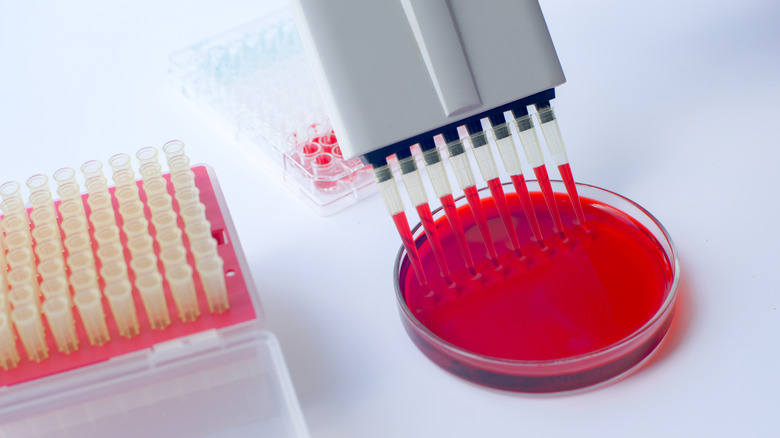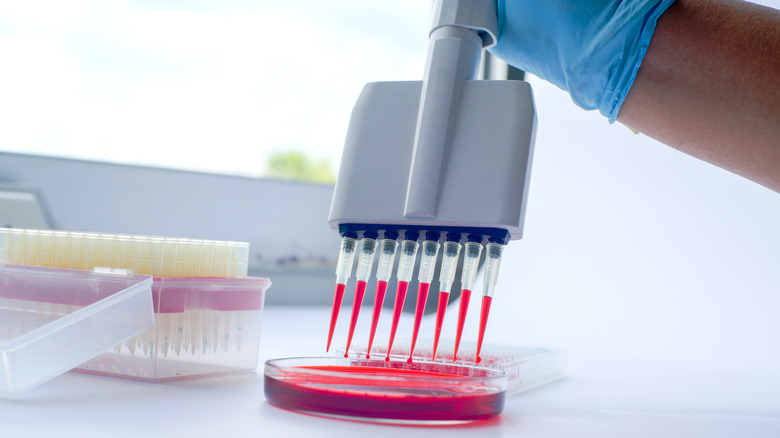Hemoglobin Versus Hematocrit: What's The Difference?
According to MedicalNewsToday, red blood cells (or erythrocytes) transport oxygen from the lungs to the rest of the body. Oxygen is transported through the bloodstream, playing a crucial role in replacing worn-out cells, supporting the immune, and supplying the body with energy (via WebMD).
No doubt, you need oxygen to survive, but it takes the optimal functioning of red blood cells to distribute this element to the various organs in the body. For this reason, it's not surprising that red blood cells are the most common in human blood, per Healthline. The importance of red blood cells makes them a viable indicator for doctors to assess the overall health condition of individuals. Two vital blood tests are required to determine the state of your red blood cells: the hemoglobin and hematocrit tests. Although these tests are similar, notable differences exist between their functions and ideal ranges. Here is what you need to know.
What's the difference between hemoglobin and hematocrit?
Health experts run a hemoglobin test to measure the amount of hemoglobin in your blood (via the Mayo Clinic). The test aims to diagnose or monitor a specific medical condition and check your overall health — but what is hemoglobin, and how important is it to your health? According to WebMD, hemoglobin is a protein found in your red blood cells. It carries oxygen and distributes it throughout the body. Additionally, it gives blood its brick-red color and helps store iron in the body (via the Mayo Clinic). About 70% of the body's iron can be found in the red blood cells, as noted by the University of California San Francisco.
As for hematocrit, Healthline defines it as the percentage of red blood cells in the total blood volume of an individual. Having the proper amount of red blood cells is essential to maintaining key immune system processes, like blood production. However, both high and low hematocrit levels can adversely affect a person's health and lead to various health conditions (via MedicalNewsToday).
What do low and high levels mean?
Although hemoglobin and hematocrit are useful tests for diagnosing deficiencies and medical conditions, there are benchmarks, and going beyond or below the thresholds may indicate different issues. A low hematocrit level can signify low red blood cells and other conditions, like bone marrow disease and certain cancers (via MedlinePlus). For hemoglobin levels, a low count is pegged at 13.5 grams of hemoglobin per deciliter for men and 11.6 grams of hemoglobin per deciliter for women, per Healthline.
High hematocrit levels indicate that your body might be producing too many red blood cells (via MedlinePlus). A high hemoglobin level starts at 16.5 grams per deciliter for men and 16 grams per deciliter for women (via the Cleveland Clinic). High hemoglobin levels might be a sign of a more serious issue, such as lung disease, dehydration, or polycythemia vera.
Generally speaking, hemoglobin and hematocrit blood tests are crucial indicators of the quantity and quality of red blood cells in your immune system. For the most part, these tests are similar. Having high or low measurements in any of the tests can indicate various conditions, as detailed in a 1990 study published in the journal Clinical Methods: The History, Physical, and Laboratory Examinations.



